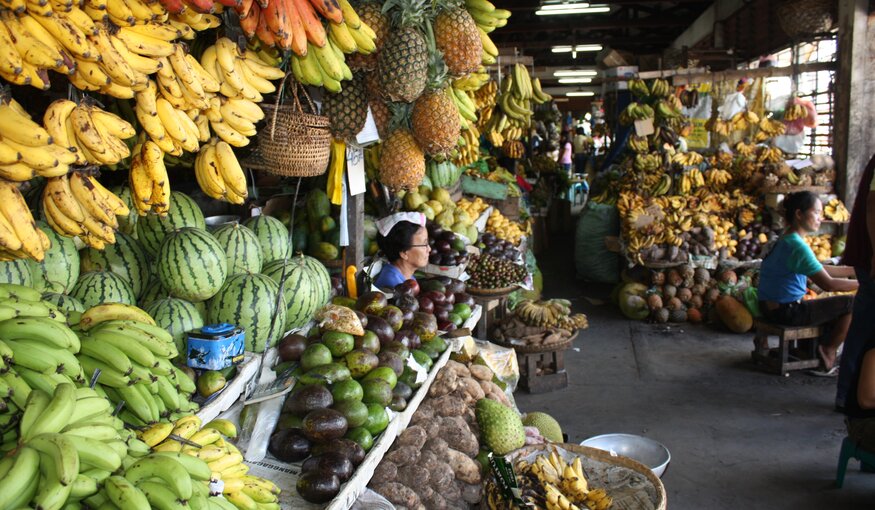A Helping Hand to Reboot Seed Conservation in the Philippines

24 June 2021
Crop diversity is humanity’s lifeline. If we want to ensure our future food security, it must be protected. Genebanks contribute to this vital task by storing seeds under special conditions to ensure that they are available when needed by researchers, breeders or farmers.
In 2019, the Philippines national genebank requested urgent funds from the Crop Trust to restore its seed-drying facility, which had been out of service for two years because of storm-related flooding, obsolete equipment and leaks in its wooden structure.
Based at the University of the Philippines in Los Baños, the National Plant Genetic Resources Laboratory (NPGRL), holds approximately 18,000 seed samples of different types of cereals, legumes, vegetables, and more. As a national repository of these crops—and their wild and weedy relatives—NPGRL is of great importance to the agricultural and food sector in the Philippines, which accounts for as much as 20% of gross national income and employs around 32% of the country’s workforce.
NPGRL’s crisis was precipitated by an unforeseen catastrophe: Typhoon Xangsane (known locally as Typhoon Milenyo), which devastated the region in September 2006, flooded the institute's conservation facilities. The laboratory’s seed-drying capabilities gradually broke down from the accumulated aftereffects of the disaster, according to Sancho G. Bon, a researcher at the university and curator of the NPGRL’s Philippine cereals collection.
“After the typhoon, repairs simply could not extend the equipment’s service life for long because power outages were happening on a regular basis, affecting the circuits and other electronics. Eventually, the seed-drying facility could no longer function effectively,” says Bon.
NPGRL previously dried seeds using a purpose-built room with specialized equipment that maintains a low-humidity, low-temperature environment. However, with the breakdown of this facility, the institute had resorted to using commercial silica beads in plastic drums to achieve a similar effect.
“You can imagine everything that’s needed to dry seeds in this manner: large volumes of silica, tons of airtight drying containers, re-drying the silica in high-temperature ovens, and the labor needed to monitor and switch out the used silica, barrel by barrel,” says Bon.
NPGRL, which relies solely on the university’s general budget for funding, therefore requested an emergency grant from the Crop Trust to rehabilitate their seed drying facility.
The Crop Trust provided NPGRL with an emergency grant of USD 15,000 through its Crop Diversity Endowment Fund. The fund is mandated to support key collections of crop diversity of critical importance to the world’s food supply. With a current value of over USD 365.5 million, it's support to the world’s genebanks comes solely from investment income earned.
It has provided more than USD 48 million in ongoing support for the conservation and use of plant genetic resources around the world since its founding in 2004, including over USD 35 million to the 11 CGIAR international genebanks. The Endowment Fund also provides support for the Svalbard Global Seed Vault, the largest safety backup of the world’s crop diversity.
In addition to its long-term commitments, however, the Endowment Fund also provides small emergency grants on an ad-hoc basis.
This can be in situations where a genebank’s whole seed collection may be placed in jeopardy by an extraordinary event, such as a natural disaster, a civil war, or a once-in-a-century pandemic.
In such cases, a little extra help—sometimes amounting to only a few thousand dollars—provided quickly can prevent a temporary, local emergency from resulting in a permanent loss of invaluable, unique crop diversity.
NPGRL used their grant to build a room insulated with polyurethane sandwich boards and fitted with a new dehumidifier and cooling system.

Drying room module unit at the National Plant Genetic Resources Laboratory (NPGRL). Photo provided by NPGRL.
The new set up maintains the moisture level at around 15% and the temperature at 15°C, ideal conditions for drying seeds. The upgraded facility also supports a larger volume of seeds to be dried at any one time and cuts the processing time from over 6 months with the silica-drying method to about 8‒10 weeks.

Trial drying set-up of maize seeds with installed dehumidifying equipment at NPGRL. Photo provided by NPGRL.
“Getting NPGRL’s seed-drying facility back in action has greatly improved the bulk seed-drying process,” says Bon. “It has eliminated the need for stopgap procedures and the extra supplies, space, and labor required to dry seeds with silica beads.”
The emergency grant from the Crop Trust’s Endowment Fund has helped maintain the long-term viability and availability of the NPGRL’s collection, helping to underpin future food security in the Philippines, according to Bon.
The Crop Trust has, over the years, supported 16 projects in the Philippines, including funding for NPGRL’s efforts to conserve threatened diversity in rice, cowpea, sweetpotato, yam, pigeonpea and maize, among others.
“Helping genebanks in trouble is what we’re here for,” says Stefan Schmitz, Executive Director at the Crop Trust.
Category: Food Security
